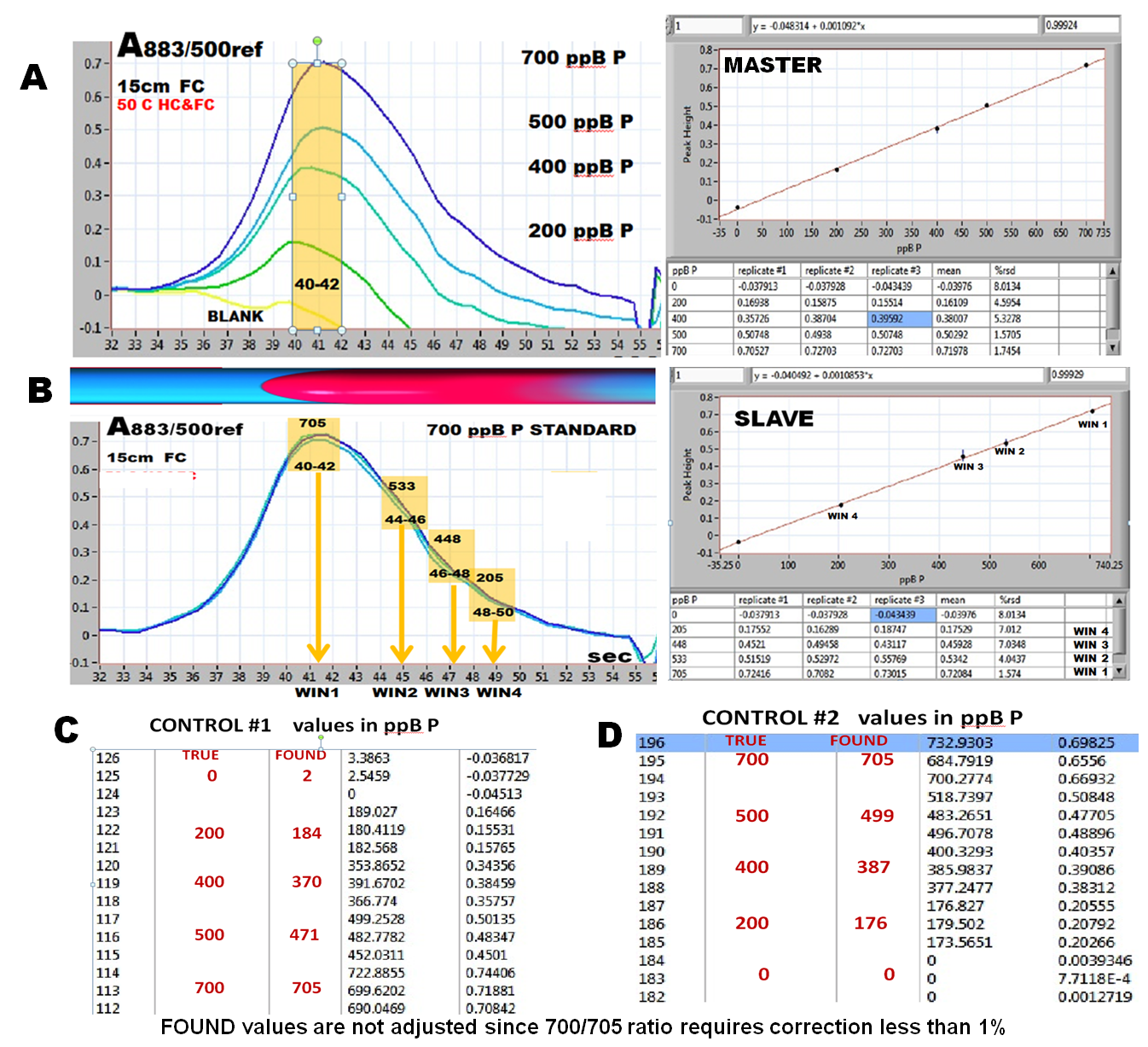The two reagent phosphate assay was selected for this test, since it presents a challenge due to complexity of overlapping gradients of sample and reagents. Using the experimental setup (2.2.24.) and inverted sequence (2.2.28.) with software protocol (D)(2.2.38.A.) the experiments were run as described on the previous page, to obtain MASTER (A) and SLAVE (B) calibrations. The two control experiments (C, D) were run five days apart, using the same slave calibration and standard solutions, but fresh set of reagents. The result confirms suitability of SSGC for reagent based assays, and highlights its advantages:
1) the only variable is the position of data collection windows on the concentration gradient, controlled by software.
2) the SLAVE calibration remains valid as long as peak shape and peak height obtained by single standard run remains the same – a feature checked easily by analyzing the most concentrated standard.
Single Standard Gradient Calibration
Phosphate Assay
2.2.38.C.










